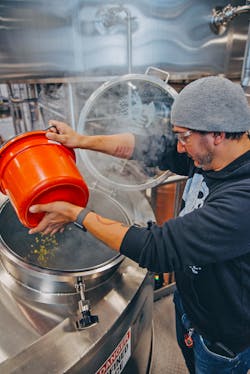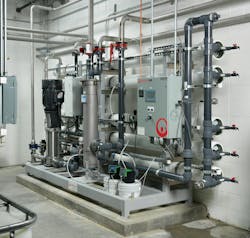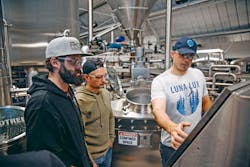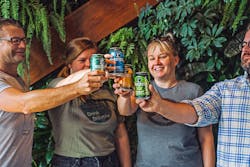Consistency is paramount in brewing operations. Careful attention to water quality control ensures every beer tastes the same everywhere it’s distributed. This is especially true for MadTree Brewing, Ohio’s first canned craft brewer. Since the company’s inception in 2013, reverse osmosis (RO) has been used for all its process water.
The Situation
One of the biggest challenges the brewer faced during its first several years was keeping up with demand. After hitting a maximum capacity of 25,000 barrels of beer, the decision was made to relocate to a new, expanded location. By adding the potential capacity to support future growth, output could be boosted to 180,000 barrels.
“Not only did we need to up our RO production rates with a bigger system but we were also switching from a well water source at the old facility to a city water source at MadTree 2.0,” said Matt Rowe, director of brewing operations.
The transition to using the City of Cincinnati’s water introduced a new set of requirements for pretreatment, which involved a chemical injection in the prefilter section of the RO unit to eliminate chloramines used in the city water.
The Solution
To achieve its vision for a more efficient and growth-ready facility, MadTree tapped Veolia Water Technologies to provide an RO skid system that met the brewer’s needs.
Two Grundfos SMART Digital dosing pumps and a Grundfos CRN vertical multistage centrifugal pump were specified for the 100-gallon-per-minute (gpm) RO packaged system. Rowe added that the dosing pumps were selected for their adjustability regarding chemical injection at two key points in the process.
In addition to the RO system, MadTree utilizes two Grundfos CRN pumps for its water supply and recirculation skid and two Grundfos CR pumps for its steam generator feedwater skid.
The Outcome
The Grundfos pumps have been issue-free since they went into service in 2017. Rowe recommends Grundfos based on ease of use, including ample ability to adjust flow rate through a simple interface, minimal maintenance, and high reliability.
Early on in the RO system’s life, adjustments were needed to dial in the precise amount of chemical injection needed to eliminate the chloramines in the brewer’s incoming water supply. Rather than requiring a Veolia tech to come out and make the adjustments, Rowe’s team was able to dial the adjustments into the pump themselves.
Rowe said MadTree purchased two backup units as part of its critical spare parts purchase list but noted, “At this rate I don’t know if we will ever need them!” WT
Brad Slagle is the U.S. industrial water treatment expert and key account manager for Grundfos, a global leader in water technology. Dedicated to understanding trends and developing solutions, Slagle acts as a liaison for Grundfos in the U.S. industrial water treatment market. Heavily focused in social responsibility and sustainability, he is devoted to helping pioneer solutions for the water reuse initiative and assisting market progress with a greener footprint.
About the Author
Brad Slagle
Brad Slagle is the U.S. industrial water treatment expert and key account manager for Grundfos, a global leader in water technology. Dedicated to understanding trends and developing solutions, Slagle acts as a liaison for Grundfos in the U.S. industrial water treatment market. Heavily focused in social responsibility and sustainability, he is devoted to helping pioneer solutions for the water reuse initiative and assisting market progress with a greener footprint.





